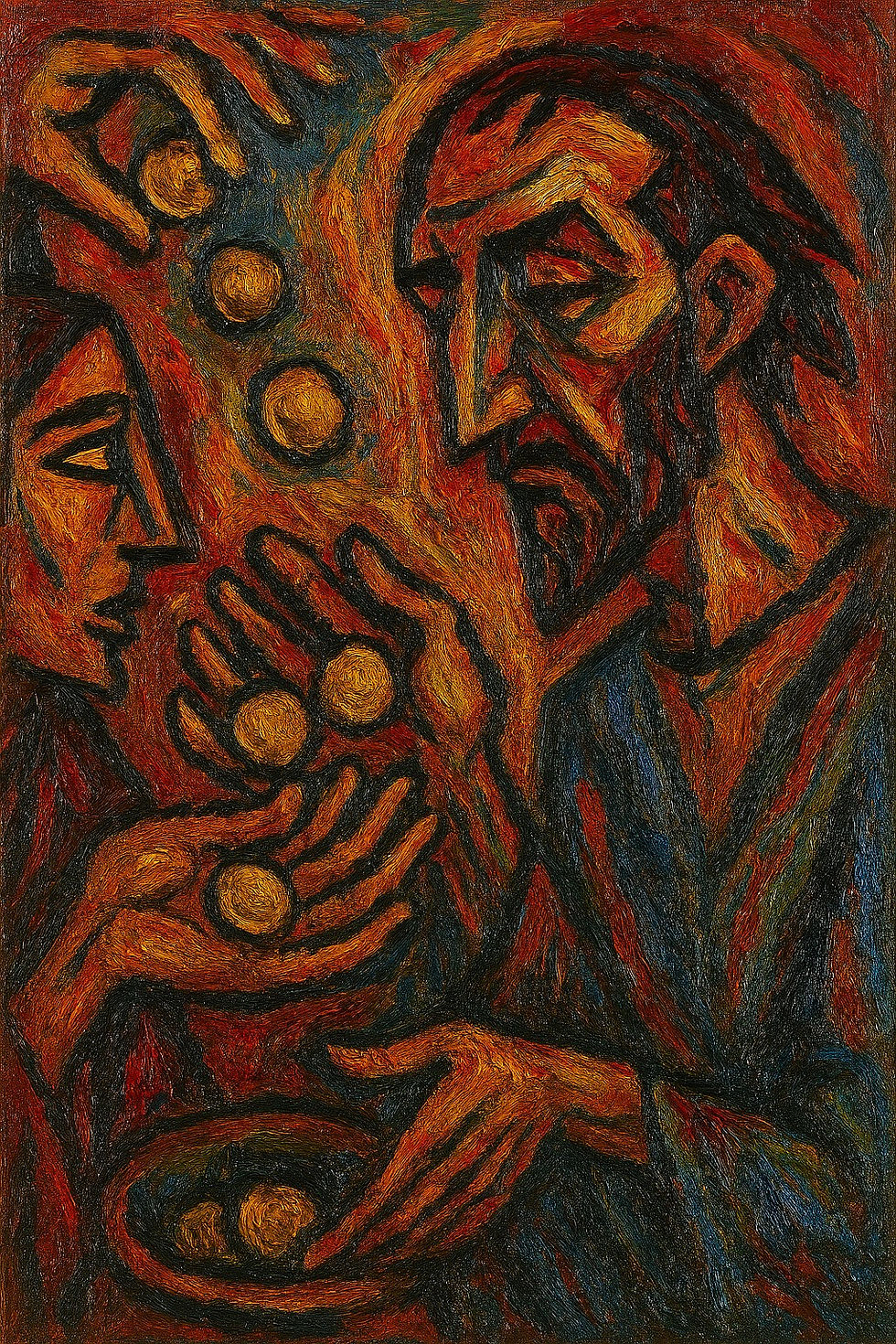postsynaptic density protein (PSD Scaffold) Shank3
- Martin Döhring

- 10. Okt.
- 3 Min. Lesezeit
SHANK3, one of the most pivotal scaffold proteins at excitatory (glutamatergic) synapses. Let’s unpack SHANK3’s molecular roles in depth — how it integrates synaptic architecture, receptor function, and plasticity on a nanometer scale.

1. Molecular Identity and Structure
Full name: SH3 and multiple ankyrin repeat domains protein 3Gene: SHANK3, located on chromosome 22q13.3Protein family: SHANK1–3; large multidomain scaffolds of the postsynaptic density (PSD)
Domain architecture:
[Ankyrin repeats] — [SH3] — [PDZ] — [Proline-rich region] — [SAM domain]Each domain acts as a molecular docking site:
Domain | Binding partners | Function |
Ankyrin repeats | α-Fodrin, Sharpin | Cytoskeletal linkage |
SH3 domain | Dynamin, Cortactin | Endocytosis, actin dynamics |
PDZ domain | GKAP (SAPAP), PSD-95 indirectly | Anchors to NMDA receptor complexes |
Proline-rich region | Homer, Cortactin, β-PIX | Links to mGluR and actin regulation |
SAM domain | SHANK self-association | Multimerization, PSD lattice formation |
⚙️ 2. SHANK3 as a Postsynaptic Master Scaffold
Core role: SHANK3 forms a central molecular hub connecting surface receptors to the cytoskeleton.
a. Structural Assembly
SHANK3 interacts with GKAP/SAPAP, which binds PSD-95, which in turn links to NMDA and AMPA receptors — creating a transmembrane-to-cytoskeleton bridge.
The Homer–mGluR5–SHANK3 axis links metabotropic glutamate receptors (mGluR5) to the same PSD network, coordinating ionotropic and metabotropic signaling.
b. Actin Cytoskeleton Link
Via Cortactin and α-fodrin, SHANK3 anchors F-actin filaments at dendritic spines.
This stabilizes spine morphology and regulates actin remodeling during synaptic potentiation.
⚡ 3. Functional Roles in Synaptic Transmission
a. AMPA receptor (AMPAR) trafficking
SHANK3 interacts with PSD-95 and Stargazin (TARP γ-2) to position and stabilize AMPARs at the postsynaptic membrane.
During LTP (long-term potentiation), activity-dependent phosphorylation and actin polymerization promote SHANK3 accumulation → enhanced AMPAR insertion → stronger synaptic transmission.
b. Calcium signaling integration
Via Homer and mGluR5, SHANK3 couples receptor activation to IP₃-mediated Ca²⁺ release and local signaling nanodomains.
Links to CaMKII, small GTPases (Rac1, RhoA), and β-PIX coordinate structural plasticity.
c. Spine morphogenesis
SHANK3 stabilizes mushroom-shaped dendritic spines by organizing a high-density PSD scaffold.
Loss or truncation → immature filopodia-like spines with impaired synaptic currents.
4. Synaptic Plasticity
LTP:
SHANK3 recruitment increases during high-frequency stimulation.
Phosphorylation by kinases (CaMKII, ERK) promotes SHANK3 polymerization and PSD expansion.
Facilitates AMPAR trafficking and actin polymerization → sustained potentiation.
LTD:
SHANK3 can be ubiquitinated and degraded (via the proteasome) during LTD.
Removal weakens PSD structure → receptor endocytosis → depression of synaptic strength.
5. Regulation and Signaling Feedback
Activity-dependent translation: SHANK3 mRNA is localized in dendrites and translated in response to synaptic activity via mTOR signaling.
Post-translational modifications:
Phosphorylation regulates SHANK3 stability and interactions.
Ubiquitination and SUMOylation fine-tune PSD composition.
Proteolytic cleavage: By calpain during strong stimulation or ischemic stress, leading to PSD remodeling.
⚠️ 6. Pathophysiology
Condition | Molecular mechanism | Phenotype |
Phelan–McDermid syndrome (22q13 deletion) | SHANK3 haploinsufficiency | Intellectual disability, autism spectrum disorder (ASD), hypotonia |
Autism spectrum disorders (ASD) | Mutations, truncations, splicing defects | Altered spine density and glutamatergic signaling |
Schizophrenia | Dysregulated SHANK3–Homer–mGluR5 signaling | Impaired synaptic plasticity |
Mania-like behaviors (mouse models) | SHANK3 overexpression | Hyperconnectivity, excitatory imbalance |
7. Conceptual model of the SHANK3 molecular network
(NMDA receptor) — PSD-95 — GKAP — SHANK3 — Cortactin — F-actin
\
→ Homer — mGluR5
→ β-PIX — Rac1 — actin remodelingThis forms a nanoscopic lattice connecting ionotropic and metabotropic glutamate signaling with cytoskeletal dynamics.
Summary: Key Molecular Roles of SHANK3
Function | Mechanism |
Structural scaffold | Links PSD-95/GKAP to actin cytoskeleton |
Receptor organization | Anchors AMPA & NMDA receptors |
Signal integration | Couples mGluR5 via Homer to Ca²⁺ pathways |
Spine morphogenesis | Controls actin polymerization & spine shape |
Synaptic plasticity | Modulates AMPAR trafficking during LTP/LTD |
Disease relevance | Mutations → ASD, intellectual disability |








Kommentare